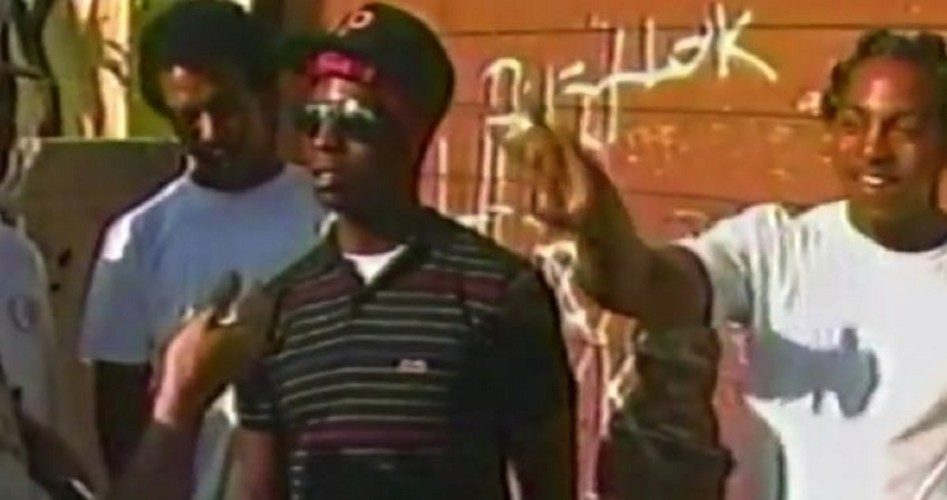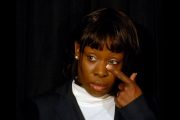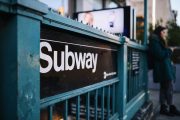
“Please Stop Helping Us,” reads the title of a 2014 book by black author Jason Riley. This plea could be uttered to the black race hustlers and white liberals who hamper policing with “racial profiling” propaganda, a move that has helped many blacks — into graves.
Given that most crime is black-on-black, it’s generally the case that while handcuffing the police is marketed as a blow for racial justice, it actually just creates more black crime victims. Yet it’s even worse than that, contends American Thinker writer Jack Cashill. He says that the attack on profiling has also led to more black pedestrian hit-and-run deaths, at least in the St Louis, Missouri, area.
After opening with a story about how two 10-year-old boys were struck with a vehicle in February by a driver who then just drove away, Cashill relates that pedestrian fatalities began spiking in 2015, when they rose nine percent; they then increased approximately 12 percent each of the next two years.
He says this is no coincidence. Pointing out that “pedestrian fatalities track closely with homicides,” Cashill reports that while homicides generally declined from 2006 to 2014, the trend reversed after August 2014. He writes, “In 2015, murders rose at their fastest pace in a quarter-century. In 2016, America experienced 17,250 murders, 3,086 more than in 2014. In sum, from 2014 to 2016, homicides increased 21 percent, and pedestrian traffic deaths increased 22 percent.”
Cashill then says there appeared to be a precipitating event: The furor that erupted in August 2014 after Officer Darren Wilson killed criminal Michael Brown in self-defense on the streets of Ferguson, Missouri. Wilson was unjustly accused of a racially motivated shooting, and, under withering media and Obama administration assault, the police pulled back.
This “Ferguson effect,” as it has been called, impacted upon Missouri most of all. “In 2013, there were 120 murders in St. Louis. In 2015, post-Ferguson, there were 188. In 2017, there were 205, a 71-percent increase from 2013. Kansas City went from 76 homicides in 2014 to 149 in 2017, a 96-percent increase,” Cashill tells us.
The Ferguson effect seems to have had a bearing on driving habits, too, especially after then-attorney general Eric Holder, perhaps frustrated that he couldn’t convict Wilson of a crime, accused the entire Ferguson Police Department (FPD) of “implicit and explicit racism” (which was “racism” itself, since Holder only leveled the accusation because the FPD was majority white).
“Holder cited as evidence the fact that blacks accounted for 85 percent of traffic stops in a city that was 67 percent black,” relates Cashill. “Local and national media latched on to this story and did not limit their criticism to Ferguson. Cops throughout the state, if not the nation, got the message.”
Leftists also pointed out that blacks were 85 percent more likely to be pulled over than whites. “What the media did not report,” writes Cashill, “is that blacks were 129 percent more likely to be stopped than Hispanics, 224 percent more likely to be stopped than Asians, and 400 percent more likely to be stopped than American Indians.” This means that whites are also more likely to be pulled over than these minority groups. But, hey, why let the facts hamper a good racial narrative?
Cashill also cites studies showing that blacks are more likely to speed than whites; thus, profiling wasn’t even, apparently, the cause of the traffic-stop disparity. Yet the result of the anti-police propaganda was what they call “de-policing,” which is when cops react to political pressure and curtail their law-enforcement activities.
Yet whatever the details here, ideas matter more than events. And a really bad idea is the discrediting of profiling.
Interestingly, no one complains about profiling when it’s a matter of the police viewing men or the young more suspiciously; nobody exclaims “This is sexism!” or “Age-profiling must be ended!” It’s not even noticed.
It’s also ignored when the profile of, let’s say, methamphetamine dealers implicates white motorcycle gang members. In fact, motivated by prejudice, the media will even incorrectly imply that an inordinate percentage of mass shooters are white, something I refuted here.
Yet when a profile implicates a politically favored group, well, that’s a different story. In reality, though, “racial profiling” is an emotion-manipulating propaganda term much like “assault weapon.” For there are only two types of profiling: good profiling and bad profiling.
We all engage in profiling continually. If you see a group of rough-hewn young men walking down the street and avoid them, refrain from petting a cute but strange dog, or hire only female babysitters, you’ve practiced “profiling,” which Dr. Walter E. Williams defines as a way to make decisions based on scant information when the cost of obtaining more information would be too high. Illustrating the point, he provided this example last year:
You are a manager of a furniture moving company and seek to hire 10 people to load and unload furniture onto and off trucks. Twenty people show up for the job, and they all appear to be equal except by sex. Ten are men, and 10 are women. Whom would you hire? You might give them all tests to determine how much weight they could carry under various conditions, such as inclines and declines, and the speed at which they could carry. To conduct such tests might be costly. Such costs could be avoided through profiling — that is, using an easily observable physical attribute, such as a person’s sex, as a proxy for unobserved attributes, such as endurance and strength. Though sex is not a perfect predictor of strength and endurance, it’s pretty reliable.
Formal “profiling” is simply the above — the exercise of common sense — only buttressed with statistical data and occurring within the law-enforcement realm. It’s a method by which the police may determine the probability that an individual has committed a crime or has criminal intent.
A profile can involve many factors: attitude, dress, general appearance, type of car driven, being out of place in a neighborhood, sex, ethnicity, and, yes, race. But the point is that good profiling considers all relevant factors in accordance with good criminological science. Bad profiling ignores some in deference to political or social pressures or due to prejudice, an example of the latter being the willingness to put an onus for domestic terrorism on white males but not Muslims.
The reality is that policing without profiling is like doctoring without attention to signs and symptoms. Consider that without profiling, there’s no such thing as “probable cause,” as the latter is when officers investigate someone based on suspicion created by observable characteristics and behaviors.
In fact, profiling is integral to much in life. Aside from crime, Dr. Williams points out that because different groups have different characteristic medical problems, physicians will consider race and sex when assessing patients. For example, Pima Indians have our nation’s highest diabetes rate; black men are approximately twice as likely as white men to develop prostate cancer; and only women get regular breast-cancer screenings, even though men occasionally develop the disease.
Should doctors be forbidden from engaging in racial and sexual profiling? That could cost lives. It’s no different in law enforcement.
Even race hustler Jesse Jackson agrees — tacitly, that is. He once said, “There is nothing more painful to me at this stage in my life than to walk down the street and hear footsteps … then turn around and see somebody white and feel relieved.” Perhaps we should start making policy not based on what’s painful to demagogues but on what, when ignored, means more pain for the innocent.
Image: Screenshot from YouTube “Crips and Bloods 80s interview“



